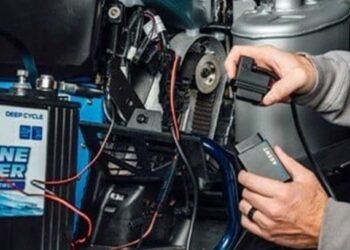You are confused and need help with how to get your car to a new city or country, right? Perhaps you’re relocating for work, have found an unbeatable deal on a distant car, or need to send a vehicle to someone. If the thought of handling this is daunting, take a deep breath and relax—we’re here to help.
With uShip, moving your car is straightforward and stress-free. Our long-standing expertise and flawless track record of safely transporting vehicles have established us as leaders in our industry. You can trust us to manage your automobile’s transportation expertly. We guarantee the safe transportation of your car.
For now, let’s dive in together and break down all the details. We’ll give you expert tips to ensure your car has a smooth journey. Are you all set for the relocation? Let’s tackle this project side-by-side!
Why Opt for Auto-Relocation with uShip?
Shipping your car should be simple, affordable, and secure. That’s why uShip stands out. They’re experts at moving cars, giving you a cheap and stress-free service. Plus, it’s reliable! When you pick uShip, you’re teaming up with a dependable company that simplifies the process of shipping your car.
Experience: uShip has been around in the transport industry for quite some time. Their inside knowledge is unmatched. Moving cars involves more than simply transporting them from one place to another. It’s essential to know and handle the complex set of rules involved. The experts at uShip are great at this, confidently handling any issue that comes up.
Affordable: One of uShip’s advantages is its affordability. Carriers will compete in an auction-style format by bidding on your job, aiming to give you the best deal. At uShip, shippers bid against each other for their jobs using an auction-style system. This competitive environment often leads to you scoring a better deal as they fight to win your business. With plenty of choices at hand, you get to decide on the perfect balance between cost and quality of service.
Dependable: Talking about reliability? The answer is “topnotch.”. On uShip, everything is open to the public. Transporters have their profile pages where you can see real feedback and ratings. This information helps you figure out if you can trust them with your car.
Convenience: You need to have their website or app at your fingertips. Whether you’re on your laptop or your phone, obtaining quotes, selecting a car mover, and monitoring the journey is effortless. But what if something goes sideways, or you have questions? Their friendly customer support team is just a click away.
Steps to Prepare Your Vehicle for Shipping
Getting your car ready for shipment is key to a hassle-free transport experience. Below are the steps for prepping your vehicle, as well as what you need in terms of paperwork and documents required by uShip.
Step 1: Wash Your Vehicle: It’s simpler to check and record a vehicle’s condition when it’s clean. Dirt can conceal damage, such as dents or scratches. Give your car a good wash on the outside and tidy up inside. Get rid of personal belongings and garbage, which can shift during shipping and cause harm.
Step 2: Perform an inspection. Checking your car lets both you and the shipper know what state it’s in before it gets shipped. After cleaning, take a walk around your vehicle. Look for any damage, such as scrapes, dents, or chipped paint. To capture its present shape, snap clear pictures from all angles with date stamps.
Step 3: Remove Items: Leave personal items in your car. Taking them out can save you from losing them. Remove all your stuff, like electronics, chargers, shades, and, most importantly, any vital papers.
Step 4: Securing Loose Parts and Accessories Loose parts can become damaged or cause damage to your vehicle during transit. Secure or remove any custom parts like spoilers, mirrors (if oversized), and antennae. Also, ensure that any fog lights are secure, and fold back your mirrors.
Step 5: Get Your Car Ready: Before the shipping company arrives, double-check your car’s essentials. It must be drivable for truck drivers to load and offload. You’ll want a full battery charge, properly pumped tires, and zero fluid leaks in your ride. And remember, only keep about a quarter tank of gas; a full one makes your car heavier than it needs to be.
Step 6: Turn Off Car Alarms: You wouldn’t want your car’s alarm blaring mid-journey, would you? It could drain the battery or annoy everyone within earshot. Therefore, you should either turn off any security alarms or provide clear instructions on how to turn them off in case they start causing trouble.
Paperwork and documentation are necessary.
What’s needed? To ensure the legality and security of the transport process, uShip will require specific paperwork.
- Proof of Ownership: This is typically your vehicle registration or title.
- Insurance Certificate: Verify your vehicle’s insurance coverage and check if additional coverage is necessary during transport.
- Photo ID: A valid driver’s license or any government-issued ID.
- Transport Order: This document provided by uShip will outline the specifics of the transport, including the transporter’s details and your vehicle’s delivery information.
Choosing the Right Transportation Method
If you need to send your car somewhere, the range of choices may be overwhelming. Let’s break things down and go over what you should consider to pick the right option for your vehicle, considering both personal requirements and budget.
Open vs. enclosed transport
- Open Transport: Imagine riding in a big trailer with no sides and rolling along the freeway. It’s cheap, common, and good enough for most cars or trucks, and despite being out in the open, it does the job.
- Enclosed Transport: Think about your car snug inside a protected trailer. Here, there is no weather or road grime. Pricey sports cars or treasured vintage models often choose this topnotch service for their maintenance. It’ll cost more, but it could be worth the extra expense for peace of mind.
Door-to-door vs. terminal-to-terminal
- Door-to-door: This option is all about ease. Just like valet parking, the company will pick up your car and drop it off as close as they can to where you want it. No fuss for you—it’s simple and saves time.
- Terminal-to-terminal: This is the less expensive choice. You must drive your car to one terminal and then get it from another terminal near your destination. If you don’t mind driving a little further and saving money sounds appealing, this could be the best option.
What to Consider When Choosing
- Budget: How much can you afford to spend? Want to be thrifty? Choose between open transport or terminal options. They do the job well, without extra perks that cost more.
- Vehicle Type: Think about what kind of car you’re sending off. An open carrier should fit a regular sedan or something you drive every day. But if your ride is a head-turner, like classic cars,
- Time Constraints: Need it fast? Go for door-to-door service. It’s quicker because it cuts down on unnecessary steps. But if you’re not in a rush, terminal to terminal might be lighter on your wallet.
- Protection Needs: Think about how much protection your car needs while it’s being moved. If it’s valuable and you can’t take the chance of damage from weather or dirt, spending more on enclosed transport is a smart move to avoid stress and future repair bills.
Understanding Auto Relocation Costs
Let’s delve deeper into the intricacies of auto relocation costs and how you can navigate them like a pro:
How far, and where?
- Travel Distance: The longer the journey your car has to make, the more you’ll end up paying. It’s like buying a plane ticket for your vehicle—the further it goes, the more expensive the ticket becomes.
- Route Complexity: Think of it this way—getting your car delivered to a remote or tricky spot, like a cozy cottage in the mountains, might cost a bit extra. It’s like paying for a special delivery.
What kind of car?
- Size Matters: Bigger cars, like your family SUV or that pickup truck, take up more room and are heavier. It’s like they need an extra seat on the bus, so they cost more to move.
- Weighty Issues: Heavier cars need more muscle to move, which means the transporter burns more fuel and puts in more effort, bumping up the cost.
How’s it traveling?
- Open Air Travel: Most cars hitch a ride on an open trailer. It’s cheaper and generally safe, but your vehicle will be out in the open, catching all the dirt and rain just like it would if you were driving.
- First-Class Enclosure: If your car is a high-end sports car or a cherished antique, you might opt for enclosed transport. It’s like giving your car a VIP ticket in a protected, covered trailer that is safe from all the elements but costs more.
Timing is everything.
- Busy Seasons: Just like holiday airfares, transport costs can go up during popular moving times, such as summer. Everyone’s moving, and prices rise.
- If you’re not in a hurry, being flexible with your timing can save you money. It’s like catching a stand-by flight—if there’s an open spot, it could be cheaper.
Extras on board:
- Door-to-Door Service: If you want the convenience of having your car picked up from your old home and delivered right to your new doorstep, it’ll cost more than dropping it off at a transport hub.
- Insurance: Ensure your car’s coverage on the road for peace of mind. While standard insurance is included, for those extra-valuable vehicles, a little more coverage could save much worry.
Smart Tips to Keep Costs Down:
- Shop Around: Don’t settle for the first quote. Gather a few, compare them, and even use them to negotiate better deals.
- Research your transporter: Go beyond the price. To avoid any costly surprises, look at reviews and reputations.
- Prepare Your Car: Lighten your vehicle by clearing out personal items and lowering the fuel level. Every little bit helps reduce the cost.
Book Your Auto Relocation with uShip
Transporting your vehicle using uShip is a breeze. Here are the steps to help you make the most of uShip’s services:
- Create your listing: Begin by spelling out what you need for your car to move. Input your vehicle’s pick-up and drop-off location, type of car, and any details like needing a covered carrier.
- Look at Quotes: Carriers will put forward their bids in response to your ad. Don’t rush; check their prices, offerings, and user feedback to pick one that matches both your demands and wallet.
- Pick Your Carrier: When you’ve spotted an offer that clicks with what you want and can afford, go for it. This confirms the agreement with your chosen carrier and keeps the cost fixed.
- Be Precise: To make sure things run without hitches, verify that all details about your car, as well as pickup and delivery spots, are spot on. Getting it right is key to avoiding mix-ups later on. Check the details to prevent unexpected problems or extra fees.
- Get Ready for Pickup: Confirm pickup times with your transporter. Prepare your car by removing personal belongings and leaving a minimal amount of gas in the tank.
- Follow Your Car’s Journey: When your vehicle is en route, all you need to do is look forward to getting there.
Preparing for vehicle pickup and delivery
Getting ready for your vehicle’s pickup and delivery during its relocation might be daunting. However, with a clear idea of what to expect, you can manage it without any issues. Here’s how:
What to Expect at Pickup:
- Set a time: You’ll agree on a pickup time with your transporter. Make sure it fits into your schedule because you’ll need to be there to hand over the keys.
- Prep Your Car: Give your car a good cleaning, inside and out, and remove all your stuff. Keep the gas tank about a quarter full—just enough to load and unload the vehicle without adding unnecessary weight.
- Check and Record: Walk around your car with the transporter, making a note of any scratches or dents. Take a few pictures for your records. This is your “before” snapshot, so be thorough.
Handling the Delivery:
- Heads up: Your transporter will let you know when they’re nearing the delivery spot. Make sure you (or someone you trust if you can’t make it) are there to take the keys.
- Inspect Again: Compare the condition of your car against the “before” photos you took. This is your chance to spot any transit damage.
- Paperwork: Don’t rush through the paperwork. Read it over, and only sign if everything checks out. If something’s amiss, make sure it’s noted down before you sign anything.
Pro Tips:
- Be There: It’s best if you can be at both pickup and delivery. Suppose you need someone reliable to step in for you.
- Keep Everything: With your transporter, hold onto all inspection notes, photos, emails, or texts. They’re essential if you need to address any issues later.
Knowing what steps to follow and what to keep an eye out for can help you feel more at ease during the whole process. And remember, it’s okay to ask questions at any point if something doesn’t seem right!
Once your car arrives after you’ve moved, follow these steps to confirm everything’s in order. This simple guide provides a checklist and advice on addressing usual concerns, like damage or insurance claims.
Post-Delivery Follow-Up and Tips
Upon delivery, inspect your vehicle immediately. Search for any new damage on the outside and inside.
Test Drive: If you can, drive the car a bit to see if there are any mechanical problems. Listen for odd sounds and check that all the functions are working properly.
Compare Documents: Examine the pre-shipment condition report of your car and contrast it with its current appearance. This helps you spot any changes.
Report Any Problems: Should you find anything wrong that wasn’t there before, tell the shipping company immediately.
Addressing common concerns
- Handling Damages: If you discover new damage, take pictures and write them down on the delivery receipt. Get in touch with the transport company to tell them about it. Most firms are good about sorting these things out, particularly if you have solid proof.
- Insurance Claim: If there is significant damage, an insurance claim may be necessary. Look at the insurance policy that covered transportation. Reach out to your insurance provider with all the paperwork required and follow their instructions to file a claim.
Tips for a Smooth Post-Delivery Experience
- Keep Records Handy Store all your documents, contracts, condition reports, and messages from your shipper so you can get to them quickly. If something comes up or you have to file a claim, you’ll need these.
- Act Quickly: Don’t wait to report problems. Transport companies typically give you a set time after delivery to flag any issues if you want your claims considered. If you’re stuck, get expert advice.
People also ask questions (PAA)
How much does it cost to ship a car across the country?
The cost to ship a car across the country can vary widely, generally ranging from $600 to $1,000 for coast-to-coast transport. Prices are determined by factors such as vehicle type, transport method (open or enclosed), and seasonal demand.
What is the safest way to transport a vehicle?
Enclosed transport is considered the safest method for shipping vehicles. It protects the car from the elements and road debris, making it ideal for luxury, antique, or high-value cars. It’s more expensive than open transport but offers the best protection.
How far in advance should I book auto transport services?
It’s best to book auto transport services at least two to four weeks in advance. This gives you enough time to find a reputable carrier and get the best rates. During peak moving seasons, consider booking even earlier to ensure availability.
During relocation, can I ship personal belongings inside my car?
Most auto transport companies advise against shipping personal belongings inside your car during relocation due to the risk of theft or damage. Additionally, extra weight can affect transit safety and cost. If it’s necessary, keep items below the window level and secure them properly.
What insurance options are available for vehicle transportation?
All reputable auto transport companies include standard liability insurance, which covers any damage resulting from transporter negligence. For additional protection, consider purchasing supplemental insurance, especially if your vehicle is particularly valuable. Always confirm the extent of coverage and any deductibles involved.













